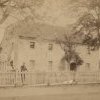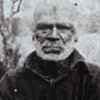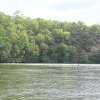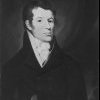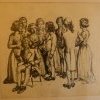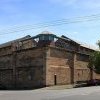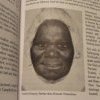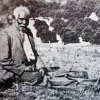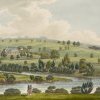1800s
1800
At least 26 whites have been killed along the banks of the Hawkesbury. There are many more Aboriginal deaths. At one stage 60 soldiers are sent out “to destroy all Aboriginal people they can meet and drive them utterly from the Hawkesbury.” Some estimates put Aboriginal deaths at 200.
Sometimes Koori children are taken after attacks on clan groups, ‘rescued’ by settlers and soldiers (they seldom become parents in the caring sense). They claim that the children are orphans whom they have rescued from the bush after their older relatives were killed. A generation of black children is growing up in white households. They are often treated as servants. Karskens, The Colony, p. 465
The historian Grace Karskens writes, ‘In this book the narratives of town-building, rural settlements and environmental responses are encircled by histories of the Aboriginal people of Sydney. Of all the rich and gripping stories of what happened in the Sydney region after 1788, these are the most astonishing and the most poignant. It is time to shake off the idea that Sydney was a “white” city, that Aboriginal people simply faded out of the picture and off the “stage of history”; it is simply untrue. The time has come, too, to recognise that Aboriginal people became urban people very quickly.’ Karskens, The Colony, p. 12.
Settlers at Edward Powell’s farm at Green Hills (Windsor) torture and murder two Aboriginal boys, Little Jemmy and Little George, when they bring in the musket of Thomas Hodgkinson, who has been murdered in the bush. They shoot one boy and hack one to death with cutlasses. A third boy, Charley, escapes by jumping into the river. Governor Hunter brings the murderers to trial. They are found guilty, but released on the grounds that their farms are in danger of being destroyed (J.L.Kohen, The Darug and their Neighbours, Darug Link, 1993, p. 63; see also Hunter to Duke of Portland, 2 January 1800, HRNSW Vol. 1V:2–3; HRA 1, Vol 11:401–3; Minutes of Proceedings, X905, pp 323, 329–362, SRNSW; Rex v Powell and others, Court of Criminal Judicature, 15–16 October 1799, Decisions of the Superior Courts of New South Wales, 1788–1899).
Yellowgowey [Yaragowhy], a Hawkesbury Aboriginal leader, claims that an Aboriginal man named Major White killed Hodgkinson and John Wimbow. (Hunter to Portland, 2 February 1800, HRA Ser 1, Vol. 11:411-12.)
1801
Governor King issues an order that ‘a large body of natives resident about Parramatta, Georges River, and Prospect Hill... are to be driven back from the settlers’ habitations by firing at them’. These mixed clans are accused of murdering stock-keeper Daniel Conroy and a settler, killing sheep and threatening anyone they meet. The Eora at Port Jackson and along the Parramatta Road are excluded from the order. (Philip Gidley King, Government and General Order, 1 May 1801, HRNSW Vol.V, 362.)
Pemulwuy is declared an outlaw by Governor King. He is identified as a member of the Bidgigal people whose country stretches up Georges River and Salt Pan Creek, from Botany Bay towards Prospect. They are also known as the Woods people, ‘an inland group’.
The frontier war continues. Governor King orders that all Aborigines be “driven back from settlers’ habitations by firing on them” except for Sydney people and those on Parramatta Road known to be friendly. The situation is still very fluid when Reverend Samuel Marsden orders his convict servants to join soldiers on reprisal raids. At least one refuses to go because he gets on well with Parramatta Koori people and does not want to fight against them. Marsden has him goaled and is said to have stated “there will never be never any good done until there is a clear riddance of the natives”. Karskens, The Colony, p. 479.
Governor King realises that reprisal raids either are unproductive or they result in horrific payback. According to Karskens (p. 481), he borrows from the tactics used against Irish rebels, that is, to identify and remove the leaders and try to be friendly with the others, He does better by exploiting tribal differences and rivalries and by playing off one tribe against another. He hopes to attract Koori people who are unwilling to join with Pemulwuy.
1802
The French prisoner Pérron learns that the harbour Aborigines “had a sort of religious terror of the Blue Mountains: they think them the residence of a kind of evil spirit, to whom they’re represented by a variety of grotesque figures.” Karskens, The Colony, p. 376. There appears to be a kind of peace on the Hawkesbury, but it dissolves again when another group of warriors begins a campaign to drive the settlers out of the land. Hostilities soon grow more violent.
Pemulwuy is shot dead by 2 settlers. His head is cut off, brought back to Sydney, placed in a jar of spirits and sent abroad to Sir Joseph Banks. His head has not been found (but see timeline, ‘Central’). Governor King discovers that it is pointless banishing Aboriginal people form the farms and towns. He does better by exploiting tribal differences and rivalries and by playing off one tribe or clan against another. Karskens, The Colony, p. 481. The farmer Matthew Locke is living on 50 acres on Robinson’s Lagoon. The Darug are raiding farms for food, but they leave his alone.
By the end of the year, there appears to be a kind of peace on the Hawkesbury, but it soon dissolves when another group of warriors begin a campaign to drive the settlers out of the land. Hostilities grow more violent and in 1804 houses at Sackville Reach are again burnt to the ground.
Barrallier describes a group hunting: When the natives assemble to hunt the kangaroo, they form a circle which contains an area of 1 or 3 miles…[2-3km] They usually stand about 30 paces apart, armed with spears and tomahawks… (Some) holding a handful of lighted bark, they at a given signal set fire to the grass and brush in front of them. In proportion as the fire progresses they advance forward with their spears in readiness, narrowing the circle and making as much noise as possible, with deafening shouts… The kangaroo, which are thus shut in that circle…try to escape in various directions, and the natives frighten them with their shouts and throw spears at the one passing nearest to them. By this means no one can escape. (Barrallier, p. 751, in Journal, HRNSW Vol 5, 1897)
The two renegades, Wilson and Knight have shown the Darug that English muskets, once discharged, are useless until reloaded. This, says Collins, ‘effectually removed that terror of our fire-arms with which it had been our constant endeavour to inspire them’. David Collins, An Account of the English Colony in New South Wales... Volume 2, London, 1802. Reprint, A. H. & A. W. Reed, Sydney, 1975)
1803
1804
A Koori boy, James Bath, 16, dies of dysentery. His parents have been shot while “they were engaged in plundering and laying waste the then infant settlement at Toongabbie”. When the parents retreat the child is found nearby and adopted by the convict George Bath. When he leaves the colony, the boy is given to a Mr Greville who in turn hands over the boy to a Mr J. Sparrow. At the age of 10, James Bath expresses a desire to work for William Miller at the Hospital Wharf in Sydney, where he becomes an expert sailor. The Sydney Gazette records that “his origin he [James] remembered with abhorrence, and never suffered to escape any occasion whereby he might testify a rooted and unconquerable aversion to all of his own colour – so esteeming the term Native as the most illiberal and severe reproach that could possibly be uttered.” From The Sydney Gazette, quoted Brook, p. 2.
Aboriginal people, probably of the Branch clan, spear settler Matthew Everingham, his wife, servant and neighbour John Howe at Portland Head, near Sackville Reach,. (SG 3 June 1804.) In June, some 300 Darug people throw spears at armed Hawkesbury River settlers, who open fire and return to Richmond Hill with stolen goods they have retrieved. A military detachment at Windsor shoots two Aboriginal people. (SG 17 June 1804).
Three Darug elders travel to Parramatta to meet Governor King. He writes, that they do not want “to be driven from the few places that were left on the banks of the river, where alone they could procure food; as they had gone down the river as the white man took possession of the banks; if they went across the white man’s ground the settlers fired upon them and were angry, that if they could retain some places on the lower part of the river they should be satisfied and not trouble the white man …”. King promises that no settlements will be made lower down the river but, unfortunately for the Darug, most of the rich land which both groups treasure, is already granted. Some colonists hold the land without ever having visited it. Karskens, The Colony, pp. 482-3
Cottages are destroyed at Sackville Reach. The attackers are said to be the “wild people” from the north side of the river, around Portland Head. They become known as the Branch Natives of the River Branch, or the River people. The Booborongal warriors on the other side of the river distance themselves from the Branch people. Karskens, The Colony, p. 401
1805
Karskens describes this war as one of shifting alliances and complex negotiations. Their lives are already entangled, often they know each other by name. Karskens, The Colony, p. 445.
In January, Tedbury or Tjedboro, son of the famous Pemulwuy, arrives in Sydney, ‘armed with a bundle of spears’. He has been friendly with John Macarthur, who lives at Parramatta. Finding Macarthur safe at his town cottage, Tedbury exclaims, ‘Master they told me you were in gaol’.‘Well Tjedboro, what has brought you here with your spears?’ asks Macarthur, who was gaoled for a few hours the previous day. He replies, with eyes flashing, ‘To spear the Governor.’ (William Macarthur, A Few Memoranda Respecting the Aboriginal Natives (no date – c.1834), MS A4360:63, ML).
In March, Bennelong and Nanbarry each spear the Cow Pastures (Camden) leader Cogy in a revenge battle on the road between Prospect and Parramatta. For three weeks, Cogy walks about with a spear shaft sticking out of his body. (SG 17 March). In April: the spear is extracted. Despite his wound, Cogy is now well enough to take part in a punishment trial at the Hawkesbury River. Aboriginal people ‘from the interior of the mountains’ use tomahawks to kill two stockmen at John Macarthur’s farm at Camden. Armed settlers chase a group estimated at more than 300 Aboriginal people. In May, Aboriginal clans ‘composed of families well known about Prospect and Parramatta, with some strangers from the Cowpasturesare permitted to ‘sit down’ (camp) between Prospect and the Georges River. Orders are given that they should not be molested. (Government and General Order, 5 May 1805, HRNSW, Vol. V: 616.)
In July, two Aboriginal people, Nabbin and Major White, are reported killed at Richmond Hill. They are believed to have murdered Thomas Hodgkinson and John Wimbow late in 1799. Magistrates Samuel Marsden and Thomas Arndell give food and clothing to two Richmond Hill chiefs, Yaragowhy and Yaramandy [Yarramundi], and ask them to help put an end to the ‘mischiefs’. On 7 July, a 13-year-old Aboriginal girl is caught trying to set fire to the Hawkesbury River farm of Thomas Chaseland. It is discovered that the girl also burned down the house of Henry Lamb, whose family had brought her up. The next day, Judge Advocate Richard Atkins discloses the death by shooting of ‘Tal-lonn’, said to have murdered Macarthur’s stockmen. He says a party led by Obediah Ikins has killed ‘many of them’. Atkins gives his opinion that Aboriginal people cannot be brought before a criminal court. (Richard Atkins to Governor King, 8 July 1805, HRNSW, Vol.V: 654).A week later, Tedbury is released from gaol at the entreaty of the ‘friendly natives’ who helped to capture Musquito. In August: Musquito and Bulldog threaten to set Parramatta Gaol on fire and ‘destroy every white man within it’. Their attempt to escape is thwarted when a white prisoner informs a gaoler.
Shortly afterwards Governor King informs John Piper, commandant at Norfolk Island: ‘The Two Natives, Bull Dog and Musquito having been given up by the other Natives as principals in the late outrages are sent to Norfolk Island where they are to be kept, and if they can be brought to Labour will earn their Food—but as they must not be let to starve for want of Substance—they are to be victualled from the Stores.’(King to Piper, Sydney, New South Wales, 10 August 1805, Letter Book, 1797-1806, A2015: 495 ML; SG 11 August 1805)
In September, ‘Woglomigh’ (One-Eye) is shot dead and Branch Jack is shot and wounded while making his escape after an attack on a boat at the Hawkesbury River. Governor King orders that the settlers be required to assist each other in repelling visits and if any settler harbours natives he will be prosecuted for a breach of the Public Order. This is very unwelcome news for those who have tried hard to cultivate friendly relations with nearby clans. Karskens, The Colony, pp. 486-487. Video, ‘The history of the west’
1806
John Luke Barber a Darkinjung man, is born approximately 1805 in Macdonald Valley near Wisemans Ferry. In 1825, he marries a young Wiradjuri woman, Ballendella. Ballendella is daughter of Turandurey, a Wiradjuri Princess who was brought to Windsor by Major Thomas Livingston Mitchell after his expedition to Lachlan River. John Luke Barber is thought to have been raised by an English family. See also ‘Further Information’, in this section of the website.
More killings and burnings along the river follow. Attacks on stock occur in the west and south west of Parramatta, probably led by Tedbury, the son of Pemulwuy. The number of warriors in these raids, sometimes reportedly between 300 and 400, suggest a high degree of organisation and coordination between the different tribes. The Aboriginal warriors are able to move quickly and lightly and easily evade ther soldiers ushing in after them.
Some of the names that appear in early documents are Gomebeere, Yaragowhy,Kootee, Duall, Thomas Chaseling, Betty Cox Sarah Castle, Ephraim Everingham, Tom Dillon, Billy Russell, Jimmy Lowndes. Billy Cootee, for example, is presented with a plaque ‘King of Mount Tomah’. He lives at the Sackville Reach Reserve and dies in the early 1900s, and buried at Cattai. (J.L.Kohen, The Darug and their Neighbours, Darug Link, 1993, pp. 78-9)












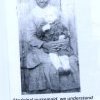

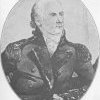

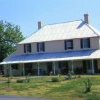
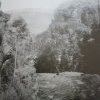
.thumbnail.jpg)

